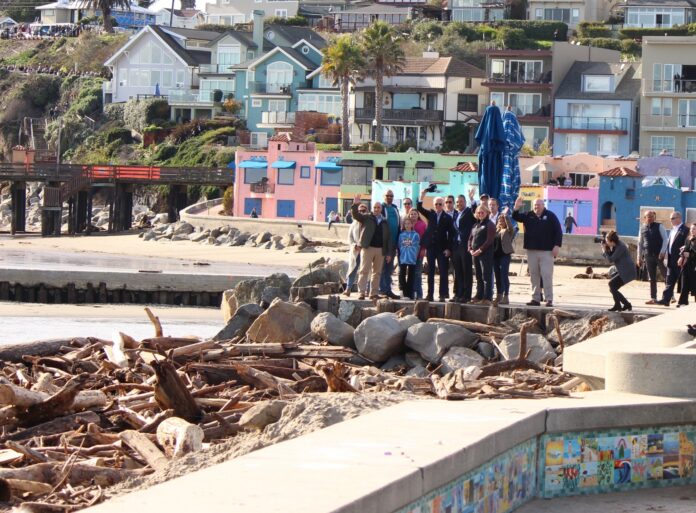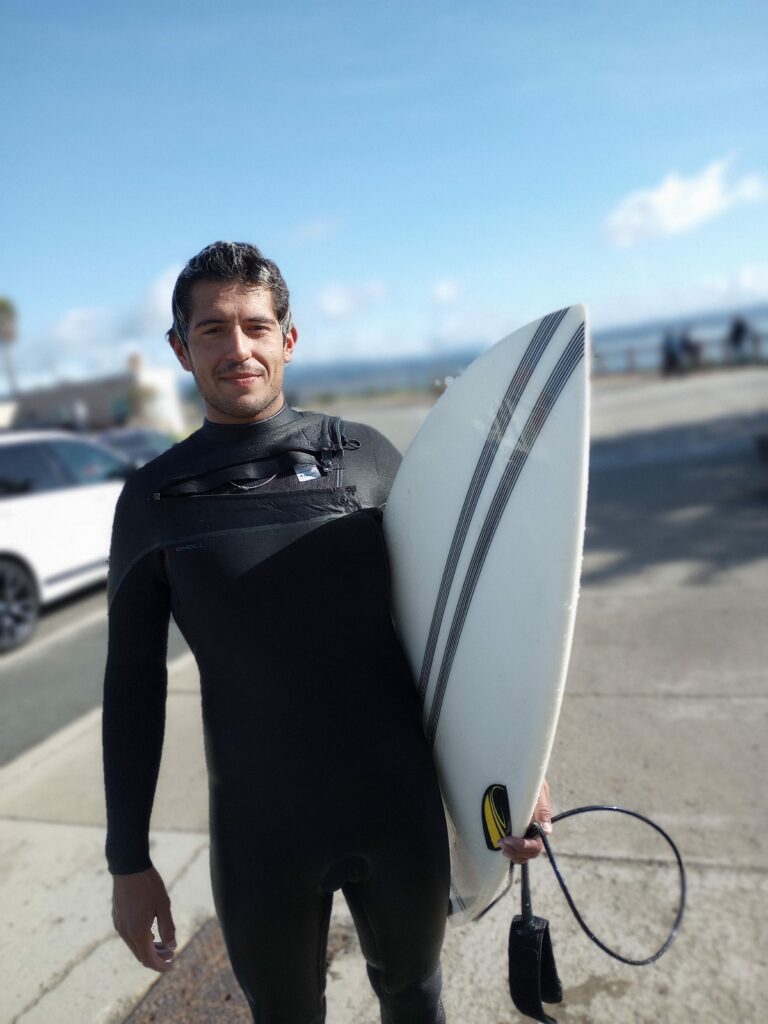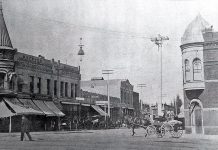
The Bay Area Congressional delegation—Rep. Jimmy Panetta (CA-19), Rep. Zoe Lofgren (CA-18), Rep. Anna Eshoo (CA-16) and Rep. Ro Khanna (CA-17)—wrote to President Joe Biden on Jan. 19 to request that relief for Santa Clara County be included in the Presidential Major Declaration for the State of California.
Biden has previously approved California Governor Gavin Newsom’s disaster declaration request, including public and individual support for Santa Cruz, Monterey and San Luis Obispo counties. Biden visited communities on the Central Coast Jan. 19, stopping at Capitola and Seacliff Beach.
Santa Clara County has experienced more than $27 million in total damages from the storms, including $17 million in damages to public infrastructure in San Jose alone. Valley Water, the local water district, has suffered $1.65 million in damages.
County operated roads and airports have sustained at least $6.7 million in damages, which is severely impacting access and emergency response capacities to several rural areas within Santa Clara County.
“As our local governments and agencies work to save lives and protect property, they need further assistance from the federal government,” the delegation—all Democrats—wrote. “Likewise, displaced families need assistance with housing, disaster-related expenses, hazard mitigation, and other essential Federal Emergency Management Agency (FEMA) services. Amending your recent disaster declaration to include Santa Clara County would enable our constituents to access this much-needed federal assistance and put our communities on a faster path to recovery.”
The Presidential Disaster Declaration triggers the release of federal funds to help individuals and communities recover from the severe winter storms, flooding, landslides and mudslides that occurred beginning Dec. 27. The funds will be coordinated through the Federal Emergency Disaster Administration and can be used for assistance to individuals and households, emergency work and the repair and replacement of disaster-damaged facilities, debris removal and emergency protective measures, mitigation to prevent or reduce long term risk to life and property from natural hazards.
“We thank you for your recent approval of California Gov. Gavin Newsom’s disaster declaration request, including public and individual support for Santa Cruz, Monterey, and San Luis Obispo counties,” the congressional representatives wrote Biden. “However, Santa Clara County has also experienced major destruction of property and public infrastructure that necessitates federal support, to include public and individual assistance, as well as hazard mitigation assistance.”

Area residents react to Biden’s visit
On Jan. 19, Eshoo, Los Gatos’ Congresswoman, was there to welcome the president when he landed in Santa Clara County, en route to tour storm damage along the Pacific.
“It was an honor to welcome President Biden to historic Moffett Federal Airfield in the heart of my District as he heads to meet first responders, state and local officials, and communities impacted by the devastating winter storms,” she said in a statement. “I asked the President to add Santa Clara and San Mateo Counties to his National Disaster Declaration so that people can receive the assistance they so desperately need to restore and repair their homes and businesses.’”
Hours earlier, outside Coffeetopia along Portola Drive in Santa Cruz, Chris Keala, 40, wasn’t exactly fired up that Biden was on his way.
“What about all the people up in the mountains?” he inquired rhetorically. “What about all the people renting in Felton who lost their homes?”
Keala used to live in Bonny Doon and calls himself a Corralitos resident trying to get “back to Boulder Creek.”
He says it’s the people inland who’d be more in need of a helping hand from the commander-in-chief.
“Is he going to all the homeless camps along the rivers?” he continued. “There’s more concern about piers and bars than actual homes.”
Niko Fulga, 21, who lives off of Old Santa Cruz Highway in Santa Clara County, had just popped out of the ocean at Pleasure Point after a quick surf in conditions that would generally be considered relatively hectic, given the fact he’s an absolute beginner.

It got pretty crazy in the mountains during the atmospheric rivers, he recalled.
“It was a little wild,” he said. “So, I mean, our house wasn’t necessarily physically damaged, but the road we live on, there’s lots of trees and mudslides. So, all the trees were falling over all the power lines, and we didn’t have power for a few days—having to use the generator, having to stock up on food and stuff.”
Fulga, for one, was pretty stoked Biden was about to make the same trek—out to the ocean—that he’s been making each day.
“I think it’s cool that he’s trying to show love to the town, just to make sure everyone’s doing alright,” he said. “I don’t know what his end-goal is, but, as long as he’s coming with a good heart, it’s fine.”
As Biden swooped into Capitola Village to meet with business owners in a heavily-restricted production that kept local media at a distance, a longtime technology worker emerged from the water lugging a longboard after a successful session.

“Trump 2024—how ‘bout that?” said Roger Chen, 54, who wasn’t cheering the Biden visit one bit. “Does he pay attention to anything that’s local? I dunno. This is a giant publicity thing.”
Chen, a Capitola resident, knows a thing or two about the media’s take on the destruction in California. After all, his yellow two-story was featured in reports about the storms.
“My place is what they kept showing, as if this was some major disaster,” he said. “They’re like, Oh, it’s a disaster, global warming, blah, blah, blah. It was fine…Messed up my yard. Lost my fire pit. It was a bummer. The Adirondack chairs were OK, though, so it’s alright.”
He believes America has been more focused on diversity policies than on developing a tech sector that can match China’s pace.
“So, like, why even have a semiconductor company here?” he asked. “That’s why it’s all in Asia now, right? It’s competitive. If you’re spending all your time worrying about, like, I dunno, political issues, then you don’t actually have time to work on semiconductors.”
A better way to help business owners would be to slash bureaucratic hurdles, he said.
“It’s crazy what it takes to run a factory in the U.S.,” he said. “I used to run a factory in Reno. Covid killed it.”









